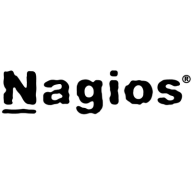

Amazon CloudWatch and Nagios Log Server compete in the log management and monitoring category. Amazon CloudWatch has the upper hand in scalability and integration with AWS, whereas Nagios Log Server stands out for its comprehensive log analysis features.
Features: Amazon CloudWatch offers excellent scalability, seamless integration with AWS services, and a holistic monitoring experience. Nagios Log Server provides detailed log analysis, in-depth data inspection tools, and thorough insights into system logs.
Room for Improvement: Users of Amazon CloudWatch see potential for better log filtering and enhanced alert options, as well as more precise monitoring. Nagios Log Server could improve in interface configuration complexity, provide more user guidance, and offer a more intuitive setup process.
Ease of Deployment and Customer Service: Amazon CloudWatch is straightforward to deploy, especially for AWS users, but lacks mentioned customer service experiences. Nagios Log Server's deployment involves more complexity due to configuration depth, yet users appreciate its prompt customer service support.
Pricing and ROI: Amazon CloudWatch offers flexible pricing based on usage but some users find cost transparency lacking. Nagios Log Server has a higher setup cost but is seen to provide good ROI due to its detailed features and functionalities.
| Product | Market Share (%) |
|---|---|
| Amazon CloudWatch | 2.1% |
| Nagios Log Server | 0.8% |
| Other | 97.1% |


| Company Size | Count |
|---|---|
| Small Business | 17 |
| Midsize Enterprise | 9 |
| Large Enterprise | 24 |
Amazon CloudWatch integrates seamlessly with AWS, providing real-time monitoring and alerting features. Its interface supports task automation, enhancing troubleshooting and analytics capabilities, while offering strong security and scalability at a cost-effective rate.
Amazon CloudWatch is an impactful platform for monitoring AWS resources and managing application performance. It simplifies infrastructure performance monitoring by providing comprehensive analytics capabilities, including application insights and event scheduling. Users appreciate CloudWatch for its detailed metrics, dashboards, and support in issuing alerts to detect anomalies. It efficiently tracks performance, optimizes resource utilization, and ensures service availability. CloudWatch is recognized for its robust alerting features and integration with other AWS services, further supporting its resource monitoring capabilities. However, there is room for improvement in dashboard customization, log streaming speed, and integration with non-AWS services. Enhancements in API integration, machine learning features, and support for third-party tools are also desired.
What features does Amazon CloudWatch offer?Industries implementing Amazon CloudWatch often focus on optimizing IT infrastructure. Companies in sectors like finance and e-commerce rely on its monitoring and alerting capabilities to ensure service uptime and performance. The platform's automation and analytics features empower teams to proactively manage performance and detect potential issues promptly.
Nagios Enterprises delivers official products, services, and solutions for and around Nagios – the industry standard in enterprise-grade IT infrastructure monitoring. With millions of users worldwide, Nagios is the undisputed champion in the IT monitoring space. Our team of dedicated professionals works to ensure total customer satisfaction with all the services we provide. Our extensive network of partners helps extend Nagios services and solutions to new organizations and markets worldwide to meet a variety of business needs. Nagios Enterprises was founded in 2007 by Ethan Galstad. Ethan created what would later become known as Nagios in 1999, and currently serves as the President of Nagios Enterprises.
We monitor all Log Management reviews to prevent fraudulent reviews and keep review quality high. We do not post reviews by company employees or direct competitors. We validate each review for authenticity via cross-reference with LinkedIn, and personal follow-up with the reviewer when necessary.